What Is Blockchain?
- 02 Sep 2024
Quick Summary
Blockchain is a type of online record book. It logs deals across computer networks. This record book is filled with "pages" of information, linked in order by date and time, forming a "chain." Each page records a bunch of deals. When a new deal happens, it gets jotted down on a page. Once a page is full, it's permanently added to the chain. You can't change or erase it, which is why blockchain is pretty safe and reliable.
What is Blockchain?
Simply put, it's a shared ledger. This ledger records a history of trades across numerous computers. In this process, they use data "blocks" that are chronologically connected, forming a "chain." Each block carries a record of trades. When new trade happens, it's recorded in a block. When the block is full, it's joined to the chain. It's permanent - can't be changed or removed. That's why blockchain's considered safe and reliable.
The blockchain works in a unique way. It's a thing called a peer-to-peer (P2P) network. Picture a bunch of computers (called nodes) all hooked up together. They can all see this thing called the blockchain. Traditional systems are different. They have one boss controlling everything. But the blockchain doesn't have a boss. Everyone has a say on the data and validating stuff that happens. There's no need for a middle-man. It cuts costs and makes transactions speedy.
Why is Blockchain Important?
Blockchain counts because it solves significant problems found in old-fashioned systems: reliability, safety, and productivity. In a system where power is concentrated, we rely on an authority like a bank or government to handle and check transactions. But this concentration may cause drawbacks, like raised costs, less productivity, and exposure to fraud or hacking.
Blockchain tech makes life easier by creating independent, direct transactions. No middle man needed. Every deal on the blockchain gets saved in a clear, unchangeable ledger. Everyone sees the same stuff. It lessens the chance of scams and boosts trust. Plus, the use of secret codes guarantees that the data on the blockchain is safe and unchangeable.
Blockchain has a knack for making things smooth and cutting out the middleman. This often means saving big bucks and getting tasks done faster. Think about money transfers, especially across countries. Usually, they're expensive and take forever as they shuffle through a ton of handlers. With blockchain, it's much quicker and costs less.
Key Elements of a Blockchain
To grasp blockchain functioning, it's critical to unravel its main components: Distributed Ledger Technology (DLT), Immutable Records, and Smart Contracts.
Distributed Ledger Technology
Serving as blockchain's spine, Distributed Ledger Technology (DLT) steps away from conventional centralized databases, which lock data into one spot. Instead, a distributed ledger stashes data over multiple spots at once. Everybody in the blockchain network gets a copy of the whole ledger, with each copy being refreshed with every new transaction. This decentralized operation makes sure no single group holds the data's reins, enhancing security and transparency.
DLT boosts the trustworthiness of the information. Multiple copies of the ledger exist on various nodes, so even if a node breaks down or gets breached, the data stays safe and reachable via other nodes. This backup plan and distribution create a sturdy and bounce-back blockchain system.
Immutable Records
A key aspect of blockchain is that it's unchangeable. Once a deal's logged on the blockchain, it's almost impossible to edit or remove. This is done using cryptographic hash functions, which make a distinct identifier (hash) for each block from its content. Alter any data in a block and the hash alters too - a telltale sign the block's been messed with.
Each blockchain block has the previous block's hash, creating a block chain connected by cryptography. Changing just one block would mean changing all following blocks in the chain. This would demand huge computing power and is nearly impossible in a good blockchain network. This unchangeability is vital for the data's integrity and security on the blockchain.
Smart Contracts
Another key aspect of blockchain technology is smart contracts, also known as digital contracts. These are automated contracts that execute their terms whenever certain conditions are fulfilled. All the rules of the contract are encoded into it. When the defined conditions happen, the contractual actions are carried out on their own, without needing extra help or mediators.
Suppose a digital contract is created to send payment to a supplier the moment a delivery is verified. It's self-executing and unchangeable, eliminating the need for someone else to ensure the contract is followed through. This minimizes disagreements and speeds up business dealings.
These digital contracts are especially useful in industries where trust and speed matter a lot. They can be implemented in various sectors, from finance to supply chain operations, to simplify and boost complicated procedures.
How Blockchain Works
Let's explore blockchain in three simple stages.
Each time a transaction happens, it's logged as a 'Block' of Data:
Picture making a transaction on a blockchain like pieces being added to a puzzle. Your transaction groups up with others to form a 'block' of data. This block stores specifics like who's involved, the time it took place, and a unique cipher called a hash that identifies the block. This hash acts as the glue, linking your block to the one before it, keeping the blockchain's structure solid.
Every Block Relates to the Ones Ahead and Behind It
When a block is stuffed with deals, it binds to the prior block via its hash. This bond is what makes the "chain" in blockchain. The hash for every block is made by blending the past block's hash with fresh info, guaranteeing all blocks are linked securely, and proof against tampering. If a person tries to change data in a block, the hash will shift, severing the connection to the following block and showing the tampering.
Transaction Blocks Form a Sturdy Chain That Cannot Be Altered: Welcome to Blockchain
Everyday transactions increase the size of the chain, adding unchangeable records. This chain made up of transaction records stays in all network computers involved in the blockchain. Each block in the chain is connected to the block before it. So, if anyone tries to change one block, they would need to change all the blocks that come after it. And in a shared network, this is almost impossible. This characteristic of being unchangeable and clear contributes to the blockchain's effectiveness, safeguarding data correctness and promoting trust.
Benefits of Blockchain
There are a lot of reasons why blockchain technology is appealing for a range of industries:
Greater trust
The way blockchain is set up, with its decentralization, naturally creates a high level of trust between people using it. With every transaction logged and checked by the whole network, trust doesn't hinge on one central power. Because of this openness, everybody can see the same facts. It lessens the chance of scam and boosts faith between stakeholders.
Greater security
Blockchain offers top-tier safety using tricky math problems and spread-out information storage. The data on the blockchain is turned into secret code and kept on tons of computers. This makes it super tough for hackers or snoopers to get in. Also, blockchain's consistency means that once facts are put in, you can't change or get rid of them. This promises a really high level of truth in the data.
More Efficiencies
Blockchain, with its smart contracts, eradicates middlemen and intensifies procedure automation. This brings about a substantial reduction in costs and transaction period. Sectors like finance cherish this enhancement in efficiency where conventional operations are usually costly and lagging. The talent of blockchain to speed up processes and decrease middleman reliance results in marked savings and swift transactions.
Blockchain Security
Keeping things safe is key in blockchain technology. It uses coding, splitting up control, and group decision-making to make sure it's very safe and hard to attack.
Coded Safety
Each move on the blockchain uses special coding that makes a one-of-a-kind digital autograph for each move. This autograph, or hash, is tied to the one before it, creating a coded chain of blocks. If someone tries to mess with a block's info, its hash changes, so it's easy to see.
Decentralization
This word describes how data in blockchain isn't kept in just one spot. Instead, it's spread across a bunch of computers, or nodes. The cool part? This makes blockchain super tough. It's like a castle with no weak spot. If one node gets attacked, no worries! The data is safe on other nodes.
Consensus Mechanisms
These are like the rule enforcers of blockchain networks. They double check transactions using systems like Proof of Work or Proof of Stake. They are basically referees that approve clean plays. This way, the blockchain keeps running smoothly and only the good stuff (valid transactions) stays on record.
Conclusion
Blockchain technology is changing our data security, honesty, and trust thoughts. It started with digital money and now is used in all kinds of work, making things safer and faster. Learn what blockchain is, how it runs, and the good things it brings. People and companies can see how this amazing technology can help.
Frequently Asked Questions
1. Want to understand blockchain?
Think of it as a kind of digital notebook that carefully saves information about exchanges. This notebook can't be messed with, and nobody has the power to control it. It employs fancy coding methods to keep data safe.
2. How does this blockchain work?
It documents exchanges in data packs called 'blocks.' These blocks are neatly arranged in order of their happening. Every block is tied to its predecessor. Once attached, a block becomes unchangeable, thereby ensuring a safe, ever-lasting record of all exchanges.
3. Ever wondered why blockchain matters?
It's handy because it allows for a safe, clear, and speedy way to check and log transactions, all without a main authority. Several industries, like finance and supply chain handling, find this very useful.
4. What makes up blockchain?
It's built up of Distributed Ledger Technology (DLT), unchangeable records, and smart contracts. These parts cooperate to make a secure and transparent process for logging transactions.
5. What good does blockchain do?
It boosts trust, security, and efficiency. By cutting out the middleman and making processes automatic, blockchain can lower costs and make various industry operations smooth sailing.
Recommended

No Blog’s Available
We're unable to find the blog that you're looking for...

